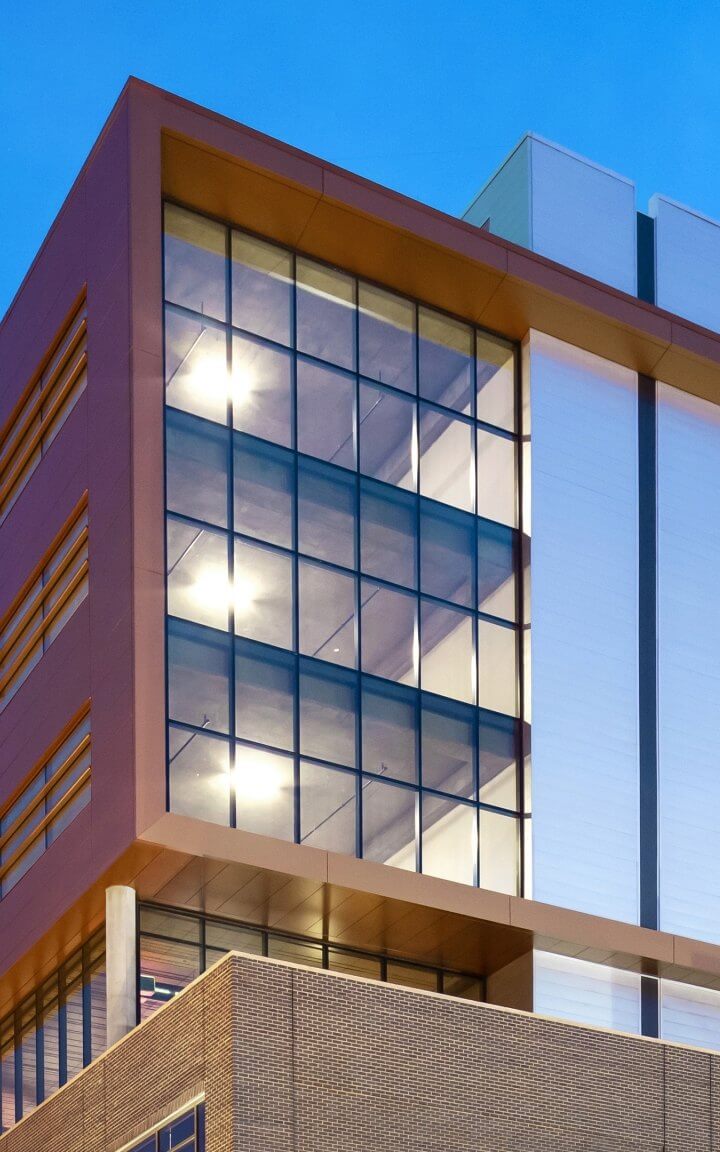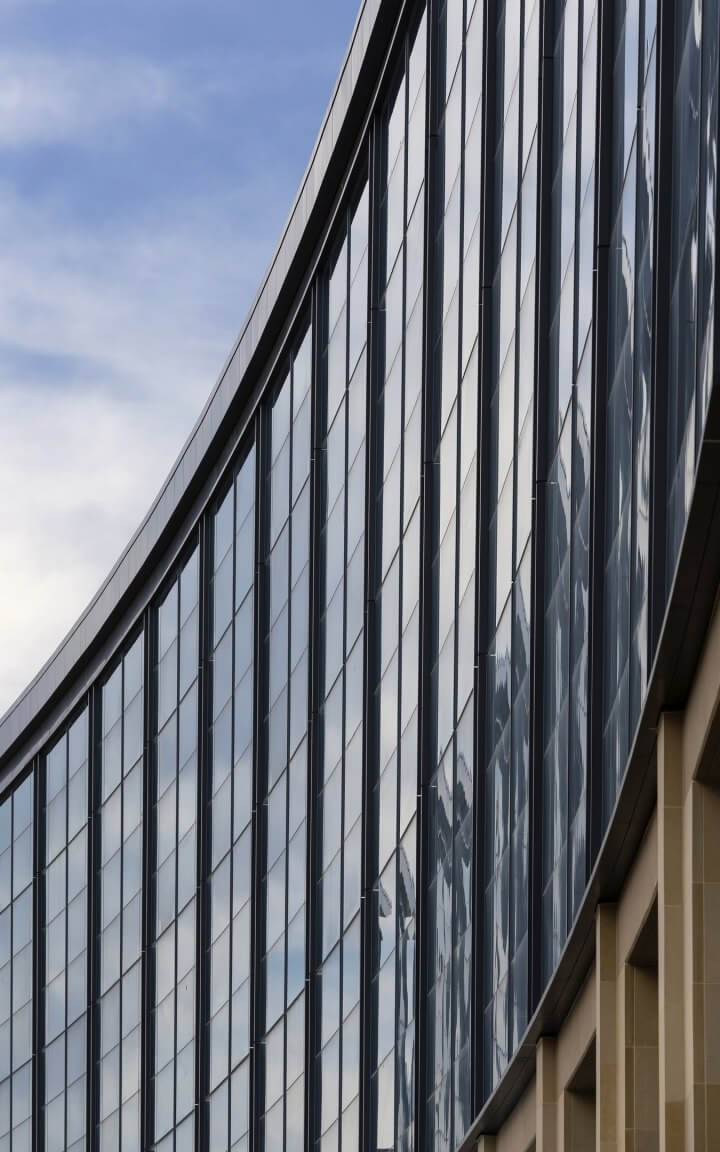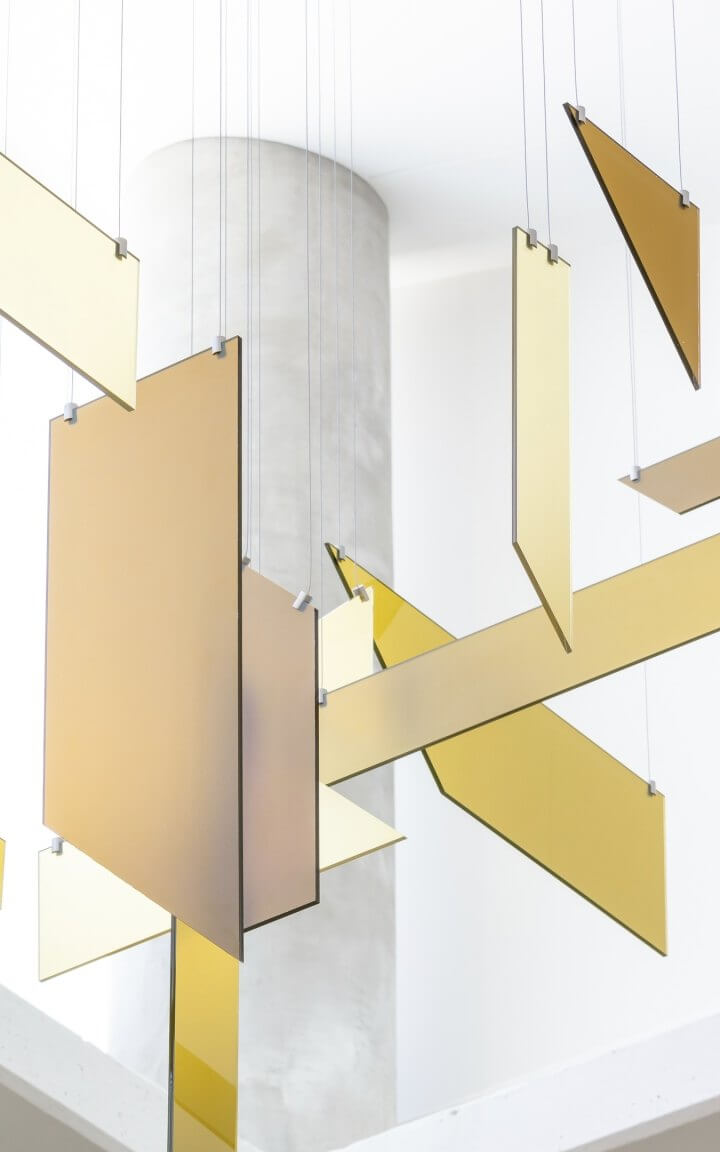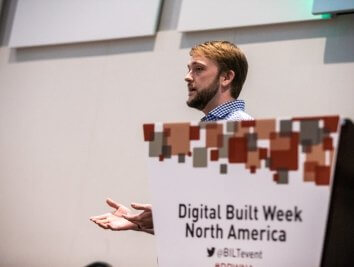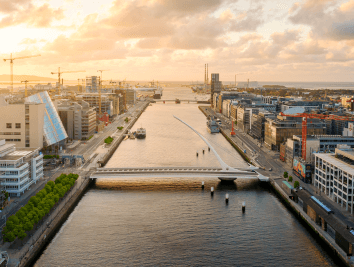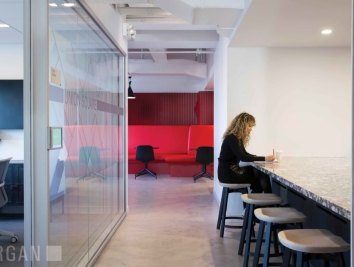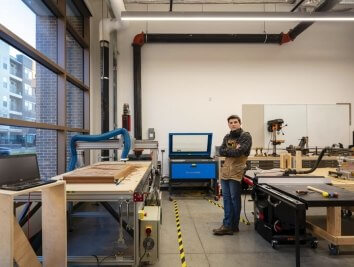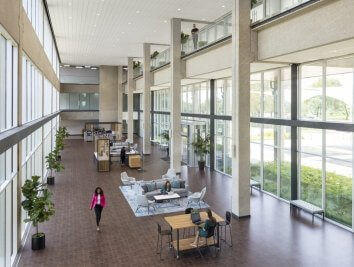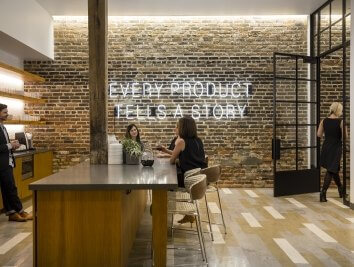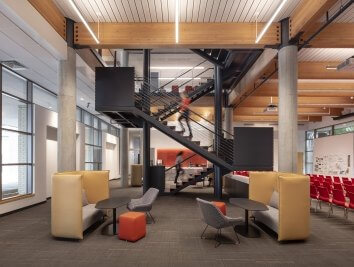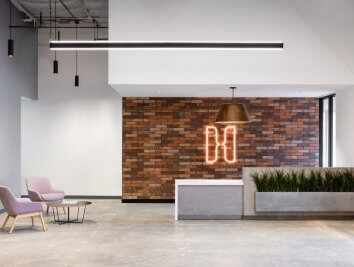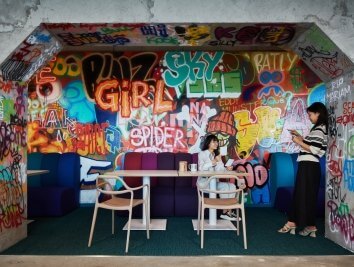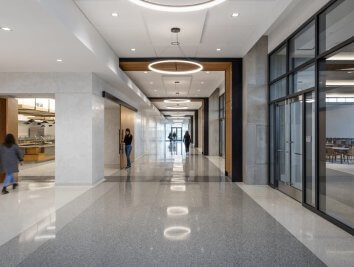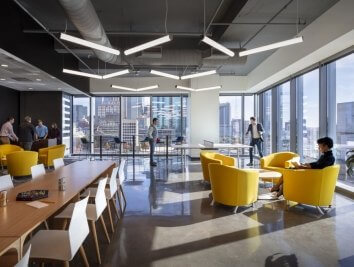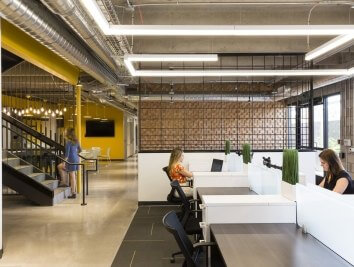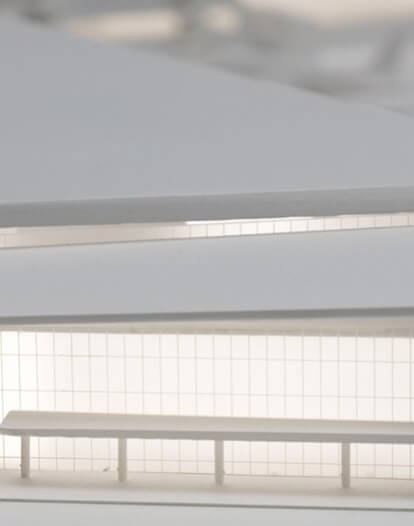Brand and the Office: A Question of Which Came First
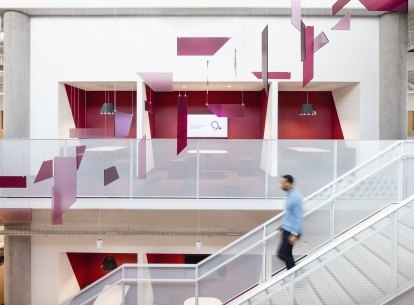
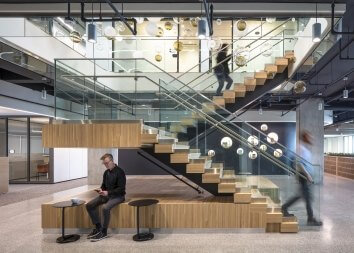
The office is a necessary ingredient for brand.
A recent Corgan study, Workforce Blurred, found that all surveyed Gen Z/Young Millennials want to at least have the option of an office, which is a strong indication the office is not going away. So if the office is not going away, how can we then activate the office to recruit and retain talent, improve outcomes, and ultimately drive the bottom line?
Another way to look at it: How do we use the office as a tool to do all those things brand does — create loyalty, deepen the emotional response, and promote a sense of belonging?
Robbie Good, Director of Branded Environments, weighs in on the new relationship between the office, staff, and brand and what it means for design.
Show of hands. Who still goes to the office?
C’mon don’t be shy!
I’ll phrase it another way, who still enjoys or even <gasp> prefers going to office? I know there are more of us than it might seem.
If you do go to the office, why do you go into the office? If you’re like me, it’s the experience of working in the office that brings you back. Working from home is like multi-tasking to the nth level. We all know the distractions – the dog, the laundry, the dog barking at the laundry, the dishes in the sink…. To me, to work in the office is to focus on the experience of work. Problem solving, team management, creativity — all the great things I enjoy about what I do — are the things I can best focus on when I’m in the office.
A lot of people claim they can focus better when working from home prompting others to ask, “what do we even need the office for now anyways?”
Each company is going to have a different answer to that question, but the answer I’d like to give you is this – you need it for your brand. Cue eye roll.
It’s not in the way you think. Not some logo frosted on glass. Not in pictures of clients or inspirational quotes. The office makes possible a brand experience that is about more than messaging or visuals, which certainly is part of it. I’d like to suggest that it makes possible an even more important part of branding: an emotional response—a much more complex concept made up of several variables.
Everything from our job function and outlook on our professional trajectory to if the printer worked that day, parking and, of course, our managers and leaders can shape how we think of our work. But, through the endless pandemic, we’ve been able to test our ability to work from home against the office, develop preferences, understand the pros and cons of each, and, ultimately arrived at the answer that there's no singular answer. And, for the most part, people need options.
A recent Corgan study, Workplace Blurred, found that all surveyed of Gen Z/Young Millennials want to at least have the option of an office which is a strong indication the office is not going away.
So, if the office is not going away, how can we then activate the office to recruit and retain talent, improve outcomes, and ultimately drive the bottom line? Another way to look at it: How do we use the office as a tool to do all those things brand does—create loyalty, deepen the emotional response, and promote a sense of belonging?
People
Perhaps the biggest contributor to what it feels like to be in the office is who you’re there with.
Your employees represent your brand daily because they influence the perception of who you are and what you do. And, what they do, how well they do it, and how it compares to how others do it is your brand. It differentiates you from competitors. Your employees also serve as ambassadors that vocalize and actualize your brand in the marketplace to outside forces which in turn create their own perception of your brand.
At the same time, they have their own feelings about your brand--feelings that are intimately linked to their work experience. That work experience dictates whether they stay or go. It determines which “top talent” and heavy-hitters you get to brag about on your website.
The office experience starts with people. It almost goes without saying, but the quality and chemistry of your people is going to affect the office energy and experience more than any other factor and whether or not someone wants to be there. I, for example, love my coworkers, therefore, I want to be in the office with them and this drives my decision to be in the office daily more than anything else. However, we ALL have or have known That One Coworker. Every HR department is trying to avoid hiring That One Coworker, but they sneak in, and like a chain reaction, end up affecting those around them.
This is where design comes in. A space that allows for the positive exchange of energy between your people, as well as individualized heads-down work, is going to be more successful than one expecting people to stay in the same spot all day long.
The Office as an Amenity
Now that that’s out of the way, let’s talk about the actual physical environment here. What physical elements make your office experience unique?
Hopefully, you’ve heard by now that the office is an amenity. Design it that way! Remember that unless you’ve got an exclusive deal, your competitors can provide all the same furniture, finishes, and equipment that you do. Sure, your space plan and how you use that FF&E will have a heavy hand in making your space unique but what else really makes your space stand out?
Environmental Graphics and Artwork
Aside from the functionality you put into your space, what you put on the walls is going to have a dramatic affect. Art, be it in the form of sculpture, painting, wall graphics or photography, is going to deliver a message about who you are and how you want your employees to feel in your space. We don’t need to think about art only in the traditional sense because even the smallest details become art. Signage, for instance is a functional piece that doubles as art because it reflects both your brand as well as the interior design and finish out. And don’t underestimate the importance of the quality of those nameplates!
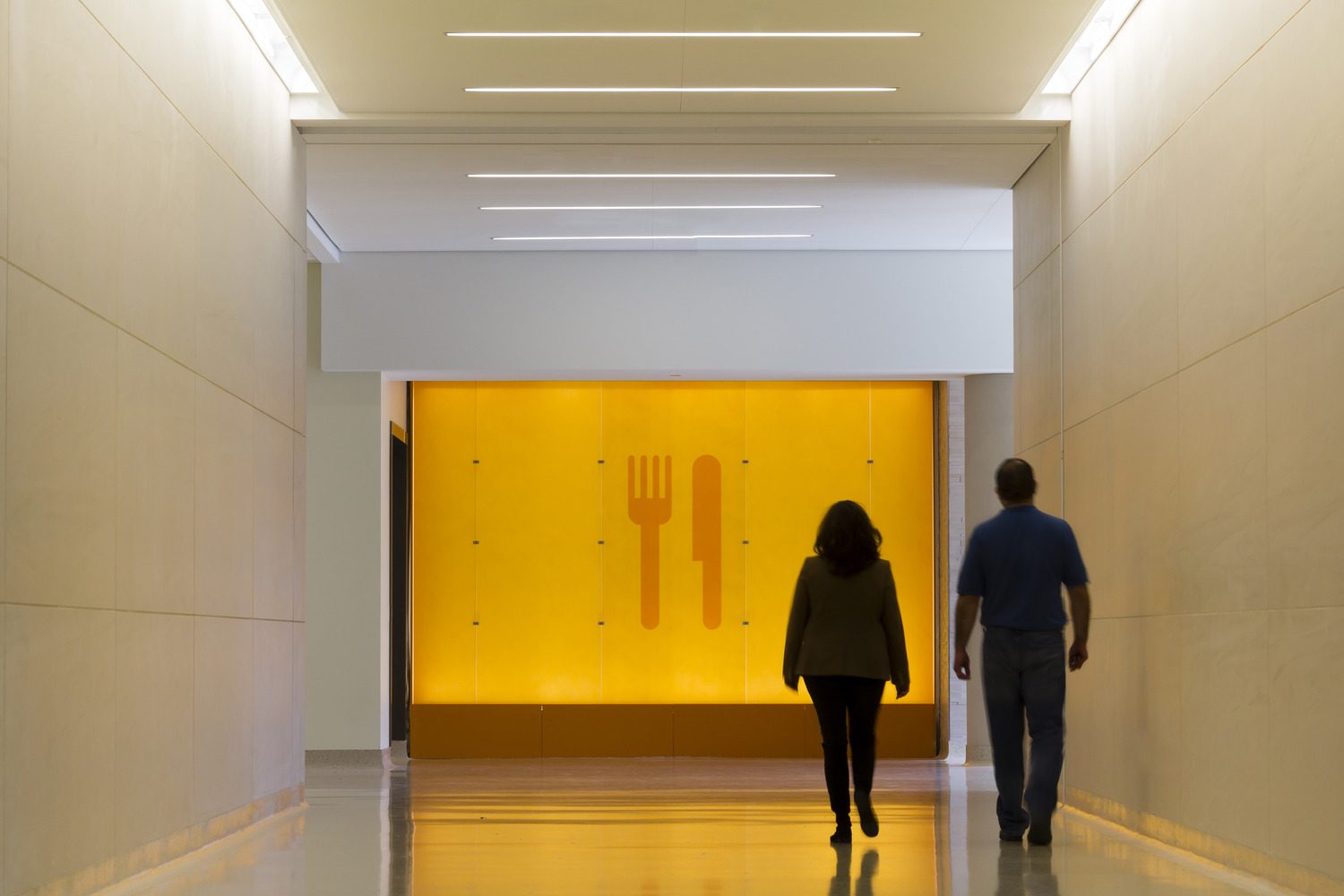
If brand is 50% emotional response and art elicits an emotional response, then art is brand at a very pure level.
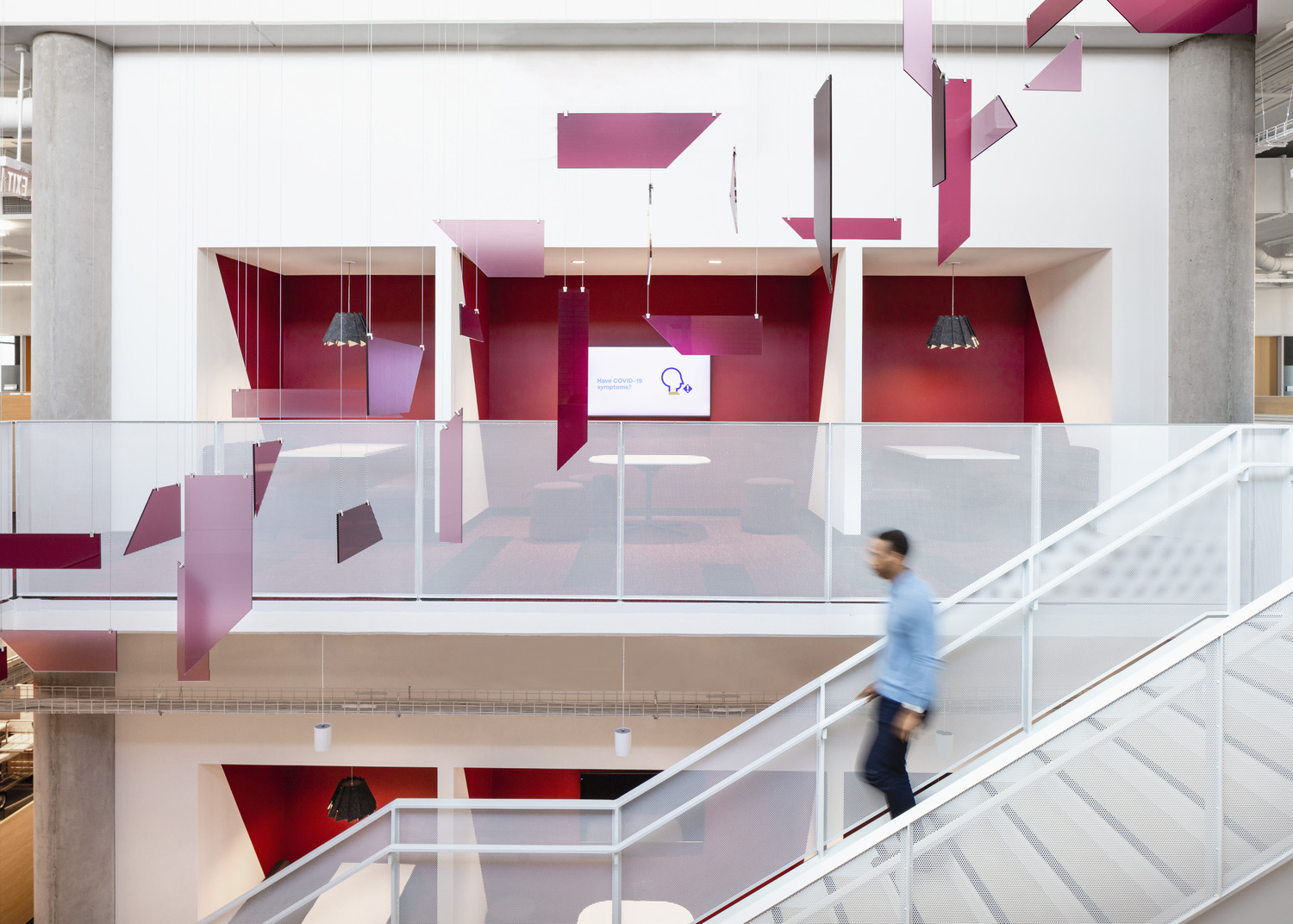
A relatively simple way to think about this is color. Color theory dictates that different colors elicit different emotions. Every brand has their color, but office spaces shouldn’t be limited by those colors.
Maybe your brand color is blue. Great color! Some word associations for blue are peaceful, tranquil, secure, and orderly. But what if you want your space to feel more energized?
Like Baylor Scott & White, you might opt to supplement your brand colors with more vibrant colors. Aside from creating more interest in the space, color can also be used for wayfinding purposes. In this case, our Corgan team utilized a pallet of four different colors to delineate four different zones on the massive floorplates. Color was applied to interior accent walls and also utilized as suspended art elements that reflect the geometry of the company logo.

Maybe, like in the case of Peloton, it’s not color at all, but shape, texture and lighting. We worked hand in hand with Peloton’s in house architects to develop a feature wall that creates motion, dynamics and mood all while reflecting the exact geometry of the Peloton P logo.
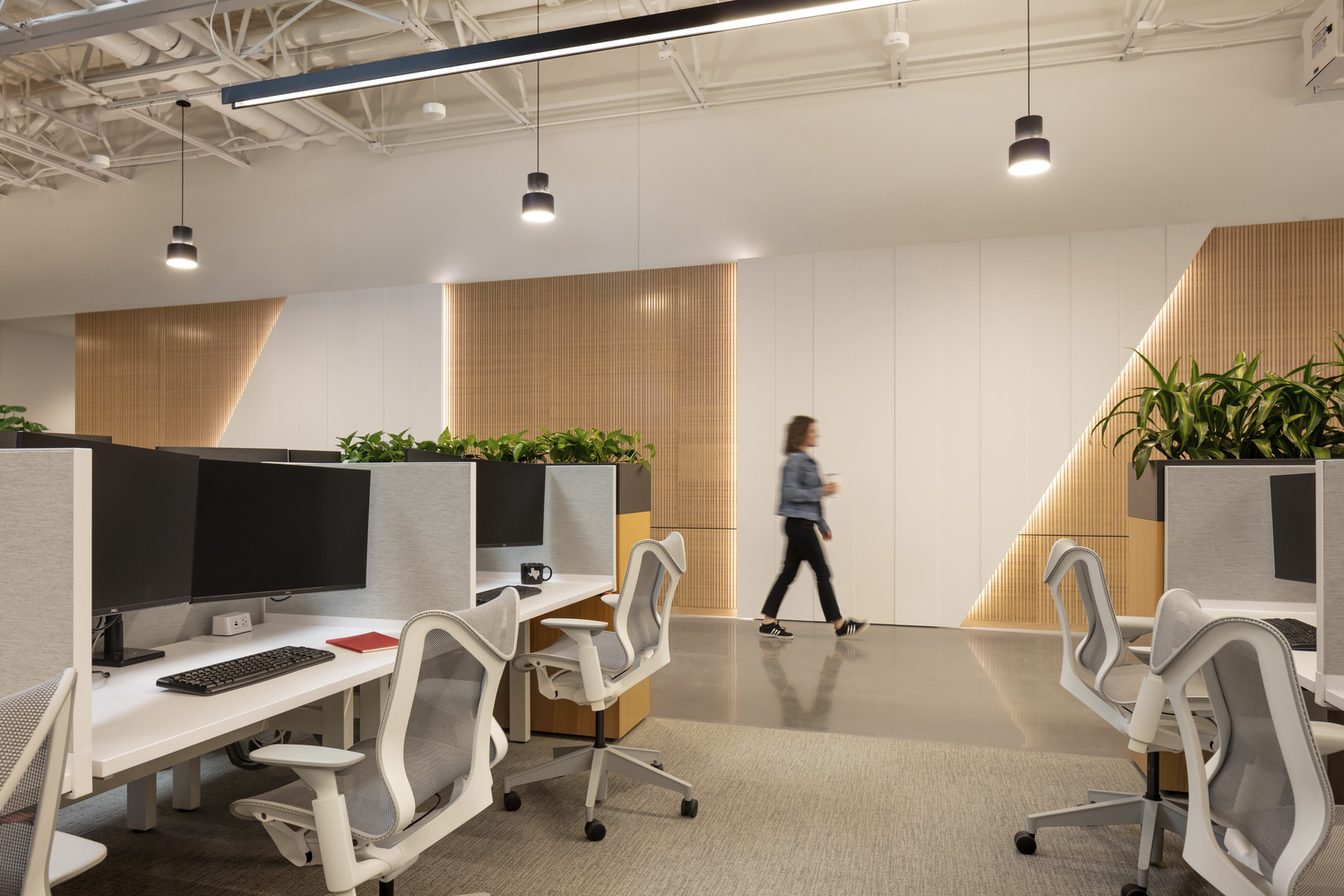
Design researchers have poured copious hours into studying ways that architecture and interior design can affect human wellbeing and the way we feel physically and mentally – biophilia, circadian rhythms, olfactory, ergonomics…the list goes on and on! These principles all seek to tap into what makes us human and create a more natural and healthier environment. You likely won’t be able to do everything but as I just suggested, even the smallest details can have a major effect.
The office has the power to connect us, engage us in a shared goal, and celebrate the concept of working together. And, when it’s done well, becomes part of our brand story that makes us different, makes us better—individually and together.
For more on the future of work, check out Corgan's Work.Place.Blurred.
TheSquare Ep #38 · Branding: Behind the Screen
While the primary function of most places— from schools, offices, and retail spaces to hospitals and theme parks— are fairly different, they all share the desire to promote a sense of belonging and loyalty in support of a common goal. Virtual and hybrid platforms are reshaping how we experience everything from retail and entertainment, learning and collaborating and how we work. Employers are now faced with the challenge and opportunity to recreate those everyday interactions that deepen our connection to the brand, mission, people— and ultimately build belonging in a hybrid world.
Enter: Branded Environments. Leveraging physical spaces to tell a story, branded environments use the language of brand and design to tell the unique story of each space and organization. On this week’s episode of TheSquare Podcast, we are joined by David Rose and Micaela Fangue, who are both on the Branded Environments team at Corgan, to discuss the possibilities of storytelling in the built environment, experiential design, and how branded environments can help employees form a sense of belonging, engagement, and loyalty.
